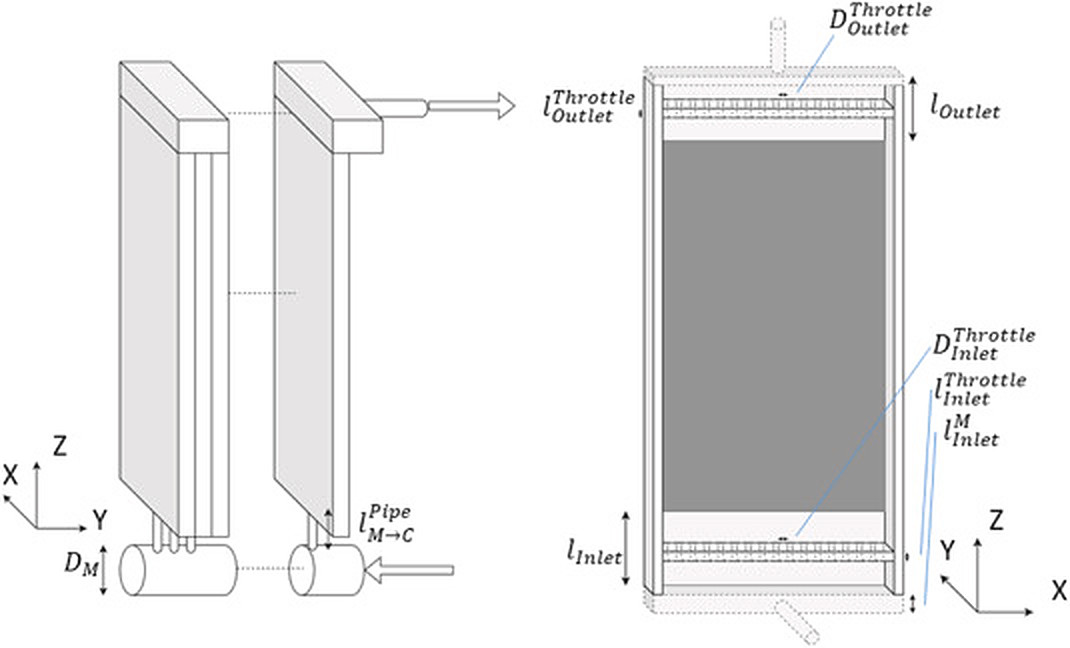The soluble lead flow battery (SLFB) is a promising small-scale energy storage technology particularly for emerging economies, due to its robustness, a lifetime of 2000 cycles demonstrated at the cell level, and the fact that its electrolyte is manufacturable directly from spent lead acid batteries.
However, there is a need for techno-economic models to allow the cost/performance of a complete system to be defined and optimized.
Now, researchers from the University of South Hampton and the University of Sheffield in the United Kingdom have for the first time defined such a model and used it in the design of a 24V system for a charging hub in Sierra Leone.
A 1.64 kW 4 h duration system was found to be optimal, before diminishing returns began. The simulated efficiency of this system was 59%.
The researchers found that electrolyte for a 3.5 kW/14 kWh system would fit in a 1000 L IBC. Increasing the scale of the unit from ∼1.5 kW to ∼3.75 kW reduces the cost of the IBC from GBP 16/kWh to GBP 7/kWh, they calculated.
Methanesulfonic acid (MSA) was found to be the largest cost component of the 4 h system, with graphitic bipolar plates next. Both have low raw material costs, and in an optimistic scenario a total component cost of <£50/kWh would be achieved, half that of current NMC Li-ion cells.
Namely, the present cost of components (including stack frame manufacture) is estimated at GBP98/kWh to GBP 120/kWh (excluding control and assembly) assuming that a deposit thickness of 1 mm may be reliably achieved. However, according to the researchers, both MSA and bipolar plates have the potential for future price decreases as more efficient manufacturing techniques have recently been introduced.
Therefore, the researchers calculate that with reductions in MSA and bipolar plate costs, this range could fall as low as £43-£56/kWh, making the SLFB cheaper at the DC level than NMC Li-ion cells.
The greatest risk to the system cost is an inability to reliably deposit lead and lead oxide at the assumed thickness of 1 mm, with thinner deposits increasing component cost and reducing efficiency.
“As testing of deposits of this thickness has not been performed across many cycles, there is an important gap in the knowledge of the SLFB which future research must address,” the researchers wrote in “Predicting the cost of a 24V soluble lead flow battery optimized for PV applications,” which was recently published in the Journal of Power Sources.
This content is protected by copyright and may not be reused. If you want to cooperate with us and would like to reuse some of our content, please contact: editors@pv-magazine.com.




1 comment
By submitting this form you agree to pv magazine using your data for the purposes of publishing your comment.
Your personal data will only be disclosed or otherwise transmitted to third parties for the purposes of spam filtering or if this is necessary for technical maintenance of the website. Any other transfer to third parties will not take place unless this is justified on the basis of applicable data protection regulations or if pv magazine is legally obliged to do so.
You may revoke this consent at any time with effect for the future, in which case your personal data will be deleted immediately. Otherwise, your data will be deleted if pv magazine has processed your request or the purpose of data storage is fulfilled.
Further information on data privacy can be found in our Data Protection Policy.